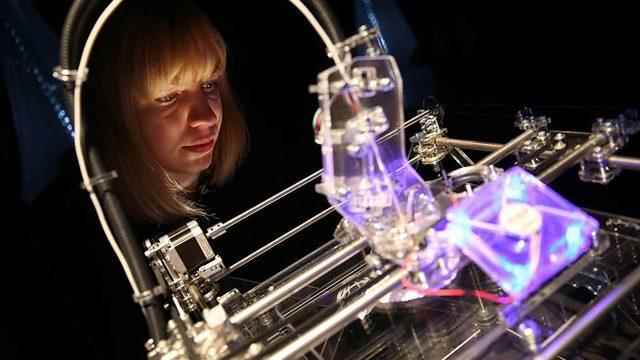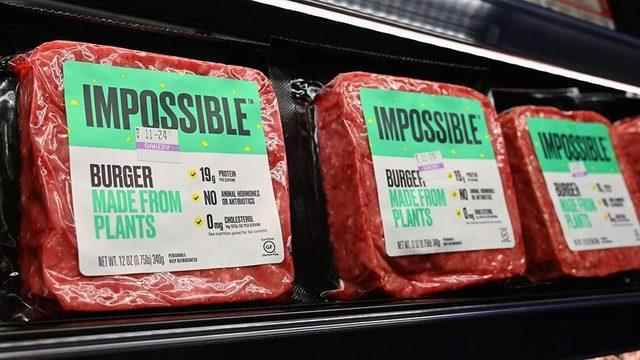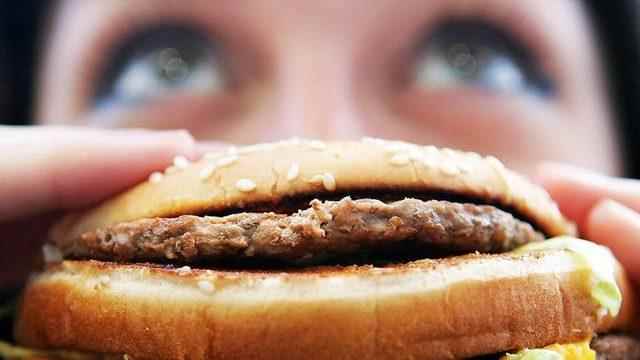As world leaders gather in Glasgow for the United Nations Conference on Climate Change (COP26), food technologists await the understanding of the role alternative proteins can play in tackling global warming.
Researchers in many countries are looking for an alternative to meat, as fattening causes an increase in greenhouse gases and triggers global warming.
The market for herbal products alternative to milk is developing gradually. It is stated that one third of the population in England regularly consumes plant milk.
Well, can the same trend develop in meat?
In December 2020, Singapore became the first country to approve the sale of fully lab-made protein.
Scientists obtain muscle tissue by multiplying a sample of an animal’s muscle cells in the laboratory and adding the nutrients contained in normal meat.
Entrepreneurship company Eat Just, headquartered in San Francisco, has put chicken meat produced in the laboratory for sale in Singapore.
Singapore follows such a long-term strategy in order to reduce its dependence on neighboring countries for food imports.
So what are the obstacles that prevent other countries from taking similar steps?
One of the partners of AT Kearney, which provides consultancy in the food and agriculture sector, Dr. “All this requires regulatory approval,” says Carsten Gerhardt.
Some countries are more open to this issue.
In Europe, the Netherlands leads the way in laboratory-produced meat technology. Experts say that Moas Meat and Meatable companies here will push internal EU regulators for approval in the next few years.
In the US, Memphis Meats and New Age Meats, supported by Microsoft’s owner Bill Gates, are expected to follow a similar path.
In addition to official approval, reducing the cost seems to be important in the widespread use of laboratory-produced meat.
Many manufacturers are still working with materials used in drug production. According to Gerhardt, the cost can be greatly reduced by using normal food materials in production.

Requires intensive energy use
For example, a material used to reproduce cells is obtained from the blood of pregnant cows; but Dutch scientists managed to use another material and other animal products instead.
In addition, meat production in the laboratory still requires intensive energy use.
Jessica Almy of The Good Food Institute states that research on heating and cooling with less energy has yielded promising results.
Two studies this year revealed that by 2030, the cost of meat production in the laboratory will be comparable to normal meat production. Research by Life Cycle predicts that lab-produced meat will account for 35 percent of the global meat market by 2040.
It is stated that meat production in the laboratory will have many benefits for the environment, reducing greenhouse gas emissions and water consumption. However, in another study conducted in the USA, it is warned that energy consumption will increase with the transition from agricultural production to industrial production in meat production and these benefits may be overshadowed.
Cyrille Filott, consumer food strategist at Rabobank, says interest in lab-produced meat depends on many criteria, including “taste, texture, price, sustainability.”

Meat produced in a 3D printer
Some companies are focusing on meat production using 3D printers. Here the cartridge of the printer contains the material of the food in a crushed state. In some luxury supermarkets, products such as pancakes, ice cream and candies produced in this way are already featured.
However, it is stated that companies are also trying much more sophisticated methods. For example, 3D bioprinters are testing the production of “marbled” high-quality steaks, which also contain the fat vessels that hold the muscle fibers.

The squeezing technologies used in making sausage and pasta are also successfully used for meat production in the laboratory.
Barcelona-based Novameat tries to produce steaks with the desired taste and texture by printing vegetable proteins in layers with micro-squeezing technology.
Working with the biomedical engineering faculty at the Israel Institute of Technology, Aleph Farms had produced the world’s first laboratory-produced steak in February using a 3D printer.
In addition, the way of producing meat products can be followed by producing plant skeletons in a three-dimensional printer and using them as structures for cells to attach to.

Packaging that will preserve food for a long time
Although nanotechnology, which includes the use of microscopic particles, is currently used in phone chips rather than food technology, it also has the potential to be applied in the food industry.
Thanks to this technology, packaging that will preserve food for a much longer time is possible.
Nanopack contains mineral nanotubes much smaller than the eye can see with its stretch film-like structure, and these contain vegetable oils with antiseptic properties such as thyme and oregano.
By slowly leaking these oils into the package from the nanotubes, oxidation of the foodstuff, microbe growth and moisture change are prevented.
Within the scope of the first trials of the project, carried out in partnership with the Israel Institute of Technology and Technion, it was observed that mold growth was delayed for three weeks, while the shelf life of fresh cherries and cheese increased by 40 and 50 percent, respectively.

Dr. Seda Erdem, from Sterling University in Scotland, states that in the supermarkets of the future, smart food packaging can be combined with nanosensors to convey up-to-date information about the food contained in the package to the consumer.
In addition, many researches are carried out in many countries on improving the taste and texture of foods, reducing the fat content, and supplementing with vitamins.
In the latest report of the Food Standards Authority in England, it is seen that this issue is approached cautiously.
The long-term effects of this manipulation of food’s building blocks on other parts of the food chain are still unknown.
